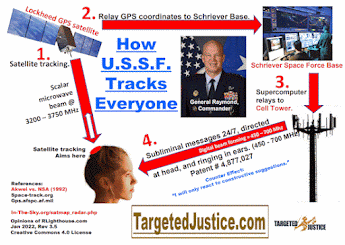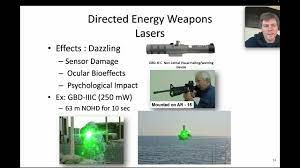Patent No. 6364824 Stimulating cell receptor activity using electromagnetic fields
Patent No. 6364824
Stimulating cell receptor activity using electromagnetic fields (Fitzsimmons, Apr 2, 2002)
Abstract
A method and associated apparatus are presented for stimulating biological activity of cell receptors. The biological activity of cell receptors is stimulated by positioning a transmitter in proximity with the target cell receptors, generating an electromagnetic field, such that the flux of the electromagnetic field extends through the target cell receptors, and fluctuating the electromagnetic field at a predetermined rate of fluctuation. An associated apparatus is presented which stimulates biological activity of cell receptors. The apparatus comprises a field coil electrically connected to an alternating current source with a predetermined rate of fluctuation. The alternating current flows through the field coils, thereby generating an electromagnetic field with a predetermined rate of fluctuation.
Notes:
TECHNICAL
FIELD
The present invention relates to stimulating cell receptor activity, and more
particularly, to using electromagnetic fields to stimulate cell receptor activity.
BACKGROUND
Osteoporosis is a disease characterized by a decrease in bone mass which leads
to spontaneous bone fractures or a bone fracture occurring due to an impact
that under normal conditions would not produce a bone fracture. The goal for
treating osteoporosis is to build bone strength to a level sufficient to withstand
normal loading conditions without failure.
A significant determinant: of bone strength is bone mass. Bone mass is determined
by the balance between the activity of osteoclast, which destroy bone, and osteoblast,
which build bone. During homeostasis, in which bone mass is maintained at a
constant level, the activity of the osteoclast and osteoblast are equal. The
amount of bone being turned over by the activity of bone cells is 5-10% per
year.
At approximately age 30 peak bone mass is achieved. At this stage the activity
of osteoblasts begin to lag behind the activity of osteoclasts. This results
in a loss of bone. The rate of bone loss varies between individuals but is generally
greater in women when expressed as a percent of total bone compared to men.
Furthermore, the drop in estrogen levels at menopause is accompanied by an increase
in osteoclast activity. Estrogen is believed to act as a brake on osteoclast
activity. The activity of osteoblast also increases but not to the same extent
as the increase in osteoclast activity. The result is an even greater rate in
the loss of bone compared with the pre-menopausal rate.
The health impact of osteoporosis includes loss of the quality of life as osteoporotic
bone fractures usually occur in the elder who have a diminished healing capacity.
Furthermore, approximately 20% of elderly women who suffer from an osteoporotic
hip fracture will die within the next year. The health care cost due to osteoporosis
is between 5 and 10 billion dollars per year in the United States.
Treatment of osteoporosis has focused on two fronts. One is inhibition of ostecclast
to prevent further resorption of bone and the second is to stimulate osteoblast
to form new bone. Osteoporosis therapies targeted at preventing bone resorption,
include Hormone Replacement Therapy (HRT) which replaces the lost estrogen with
therapeutic estrogen. However, side effects of HRT such as increased rate of
breast cancer or cervical cancer has fueled the search for a better means of
decreasing bone resorption. Currently, the most popular method of reducing bone
resorption is through bisphosphonate based drugs. Fosamax from Merck is the
leading market contender in this class of anti-bone resorbing drugs. Another
therapeutic is calcitonin which is a naturally occurring protein that inhibits
osteoclast activity and is now available as a nasal spray thereby eliminating
the need for injections.
The second focus for osteoporosis therapy is to stimulate osteoblast to form
more bone. Clinical studies conducted using osteoporotic patients indicate that
the predominant determinant of bone formation was the number of osteoblast.
Fluoride (NaF) therapy fits into this category as evidence indicates that bone
formation is increased with NaF treatment However, there is also evidence that
increased bone mass following NaF treatment does not translate to stronger bones
as the quality of bone is compromised.
A general paradigm in biology is that mature, fully differentiated cells do
not divide. Therefore, to increase the number of bone producing, fully differentiated
bone cells it is necessary to first increase the number of pre-osteoblast cells
and then induce their maturation into fully differentiated bone cells. Two factors
which occur naturally in the body are insulin-like growth factor I (IGF-I) and
transforming growth factor beta (TGFB). IGF-I and TGFB are in a class of proteins
known as ligands. Using isolated bone cells in culture it can be demonstrated
that IGF-I acts to increase the rate of proliferation of bone cells and TGFB
acts to increase the differentiation state of bone cells.
The primary function of a ligand such as IGF-I or TGFB is to activate specific
receptors located on the surface of cells. IGF-I activates the IGF-I receptor
and TGFB activates the TGFB receptor. As such, alternative means of activating
these receptors will result in the same biological endpoints as activation by
the natural ligand. A technique that has been the subject of study is the use
of an electromagnetic field (also referred to as a magnetic field) to activate
receptors.
An early attempt at a receptor specific electromagnetic field theory was based
on the assumption that the majority of binding energy in the ligand-receptor
interaction was used for specificity. For a specific ligand to find a specific
receptor while millions of other molecules are present a considerable loss of
entropy (randomness) and, therefore, energy is required. Assumptions were made
about the strength of the chemical bonds and the cost for overcoming entropy
was subtracted to yield an amount of energy. This amount of energy was hypothesized
to represent the amount of energy being used by the receptor to become activated.
If this receptor `activation` energy were unique for a particular receptor then
it would be possible to apply an electromagnetic field that would impact the
required energy to a receptor and activate it. However, the electromagnetic
field energy that would be required to activate a receptor from these calculations
was high and thermal heating of the water surrounding a cell would interfere
with any specificity. Therefore, this technique is not preferable.
Accordingly, it would be advantageous to provide a technique to stimulate cell
receptor activity with lower energy electromagnetic fields.
SUMMARY
This application discloses a method and apparatus for stimulating cell receptor
activity for treatment of maladies such as osteoporosis. An electromagnetic
field or signal is generated by a device positioned in proximity to one or more
target cell receptors, such that the flux of the electromagnetic field extends
through the target receptor. The electromagnetic field is then fluctuated at
a predetermined rate.
The device comprises a transmitter for generating an electromagnetic field having
a predetermined rate of fluctuation and a positioning apparatus for positioning
the transmitter such that the flux of the electromagnetic field extends through
the target receptor.
----------------------------------------
Although
preferred embodiments of the present inventions have illustrated in the accompanying
Drawings and described in the foregoing Detailed Description, it will be understood
that the inventions are not limited to the embodiments disclosed, but are capable
of numerous rearrangements, modifications and substitutions without departing
from the spirit of the invention as set forth and defined by the following claims
and equivalents thereof.




Comments